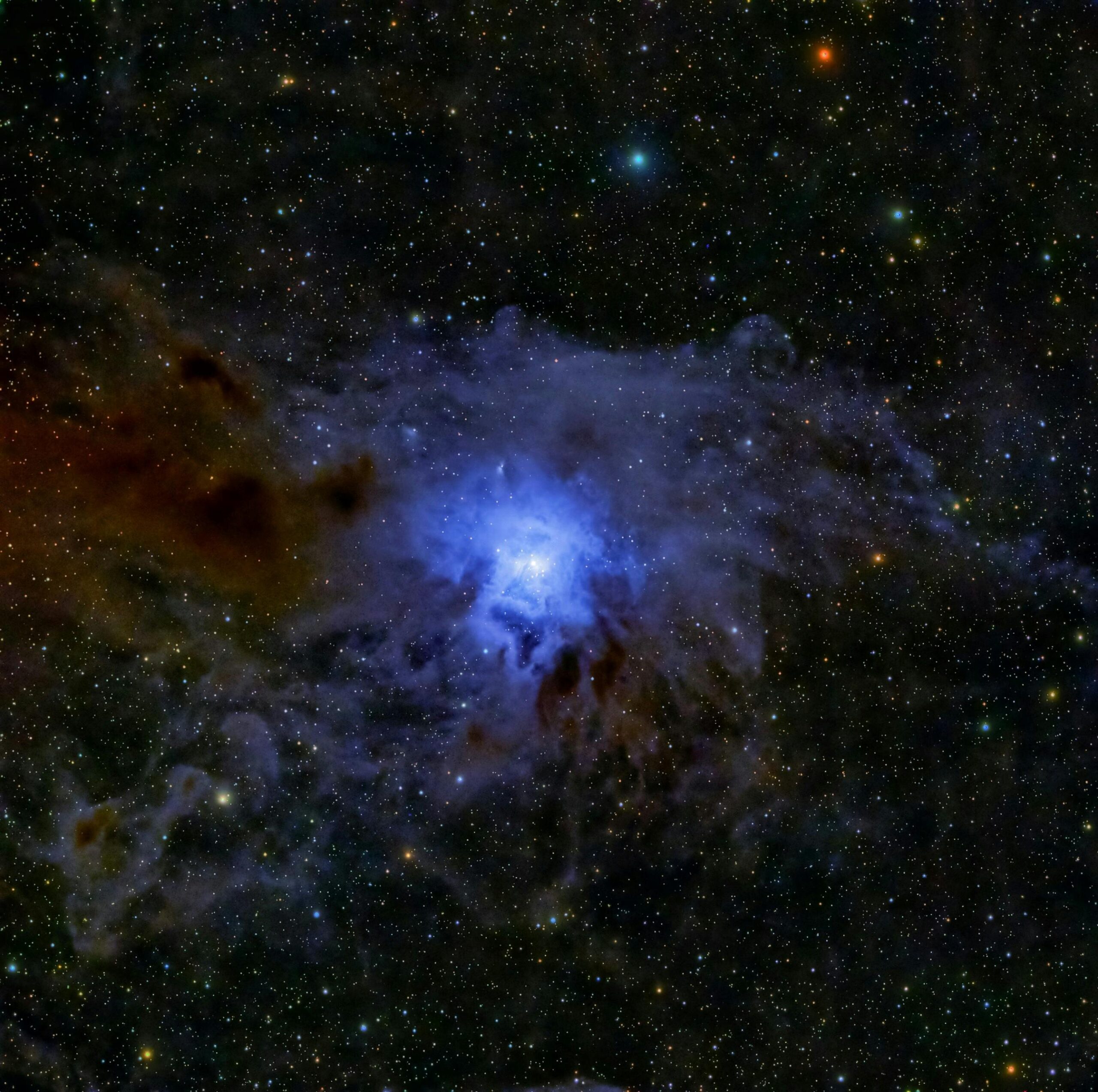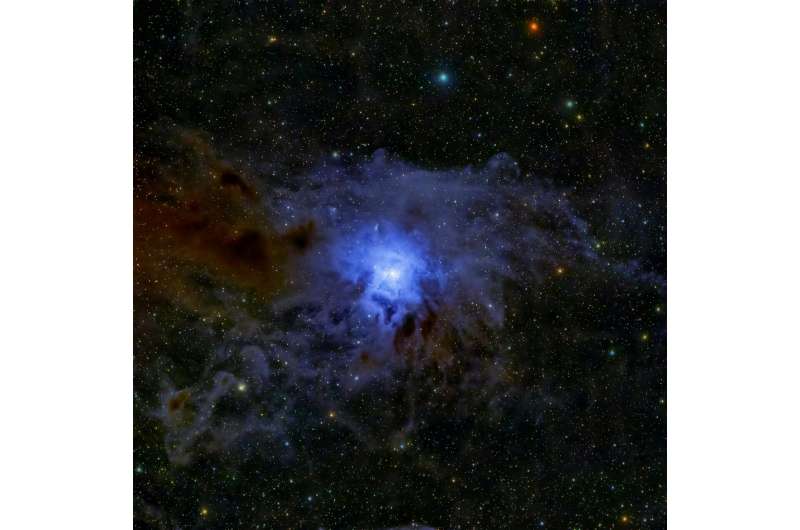

The reason we call dark matter dark isn’t that it’s some shadowy material. It’s because dark matter doesn’t interact with light. The difference is subtle, but important. Regular matter can be dark because it absorbs light. It’s why, for example, we can see the shadow of molecular clouds against the scattered stars of the Milky Way. This is possible because light and matter have a way to connect.
Light is an electromagnetic wave, and atoms contain electrically charged electrons and protons, so matter can emit, absorb and scatter light. Dark matter isn’t electrically charged. It has no way to connect with light, and so when light and dark matter meet up they simply pass through each other.
All of our observations suggest that dark matter and light only have gravity in common. When dark matter is clustered around a galaxy, for example, its gravitational tug can deflect light. Because of this we can map the distribution of dark matter in the universe by observing how light is gravitationally lensed around it.
We also know that dark and regular matter interact gravitationally. The tug of dark matter causes galaxies to gather together into superclusters. But an unanswered question is whether dark and regular matter only interact gravitationally. If an atom and dark matter particle intersected, would they really just pass through each other?
Since we haven’t directly observed dark matter particles we can only speculate, but most dark matter models argue that gravity is the only common link with light and regular matter. Dark and regular matter clump around each other, but they don’t collide and merge like interstellar clouds. But a new study suggests the two do interact, which could reveal subtle aspects of the mysterious stuff.
The study looks at six ultrafaint dwarf galaxies, or UFDs. They are satellite galaxies near the Milky Way that seem to have far fewer stars than their mass would suggest. This is because they are mostly made of dark matter. The findings are published in The Astrophysical Journal Letters.
If regular and dark matter only interact gravitationally, then the distribution of stars in these small galaxies should follow a certain pattern. If dark and regular matter interact directly, then this distribution will be skewed.
To test this, the team ran computer simulations of both scenarios. They found that in the non-interacting model the distribution of stars should become more dense in the center of the UFDs and more diffuse at the edges. In the interacting model the stellar distribution should be more uniform. When they compared these models with observations of the six galaxies, they found the interacting model was a slightly better fit.
So it seems dark and regular matter interact in ways beyond their gravitational tugs. There isn’t enough data to pin down the exact nature of the interaction, but the fact there is any interaction at all is a surprise. It means that our traditional models of dark matter are at least partly wrong.
It may also point the way toward new methods of detecting dark matter directly. In time we may finally solve the mystery of this dark, but not entirely invisible, material.
More information:
Jorge Sánchez Almeida et al, The Stellar Distribution in Ultrafaint Dwarf Galaxies Suggests Deviations from the Collisionless Cold Dark Matter Paradigm, The Astrophysical Journal Letters (2024). DOI: 10.3847/2041-8213/ad66bc
Provided by
Universe Today
Citation:
Dark matter could have slight interaction with regular matter, study suggests (2024, September 26)
retrieved 27 September 2024
from https://phys.org/news/2024-09-dark-slight-interaction-regular.html
This document is subject to copyright. Apart from any fair dealing for the purpose of private study or research, no
part may be reproduced without the written permission. The content is provided for information purposes only.